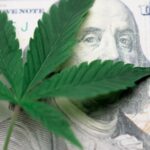Introduction
Despite domestic challenges and a rapidly changing global landscape, the US economy remains the world’s largest and most important. US GDP, which makes up 20% of global output, remains larger than China’s. The sixth-highest per capita GDP according to the IMF (PPP). An advanced and technologically advanced services sector accounts for roughly 80% of the US economy’s output. The US economy is driven by service-oriented businesses in technology, finance, healthcare, and retail. More than a fifth of the Fortune 500 companies are based in the US.
Although the services sector drives the economy, manufacturing accounts for roughly 15% of total output in the US. A leader in high-value industries like automobiles, aerospace, machinery, telecommunications, and chemicals, the US ranks second globally in terms of manufacturing. Agricultural output is less than 2%. In fact, the US is the world’s largest agricultural exporter, thanks to abundant arable land, advanced farming technology, and generous government subsidies.
A mix of factors keeps the US economy strong. Both natural resources and a highly developed infrastructure are abundant in this country. It also has a well-educated and productive labor force. Also, in a free-market and business-oriented environment, physical and human capital are fully leveraged. Each of them contributes to this unique economic environment. This is because the government provides political stability, a functioning legal system, and a regulatory structure. Many immigrants bring a strong work ethic and an entrepreneurial spirit, and a willingness to take risks. Innovation, R&D, and capital investment continue to drive economic growth in the US.
It’s safe to say that the American economy is now trying to stabilize after a period of considerable turmoil. Low-interest rates, widespread mortgage lending, excessive financial risk-taking, high consumer debt, and lax government regulation all played a role in the devastating recession of 2008. The economy has slowly but unevenly recovered since the depths of the recession in 2009.
COVID-19 pandemic led to a rapid decline in economic activity in the US in early 2020, even though GDP growth was positive in the third quarter of 2020. Despite this, economic activity remains below pre-pandemic levels. In light of the relationship between the economy’s success and the general well-being of US people, policymakers are concerned about economic recovery and long-term growth.
Current Economy Overview
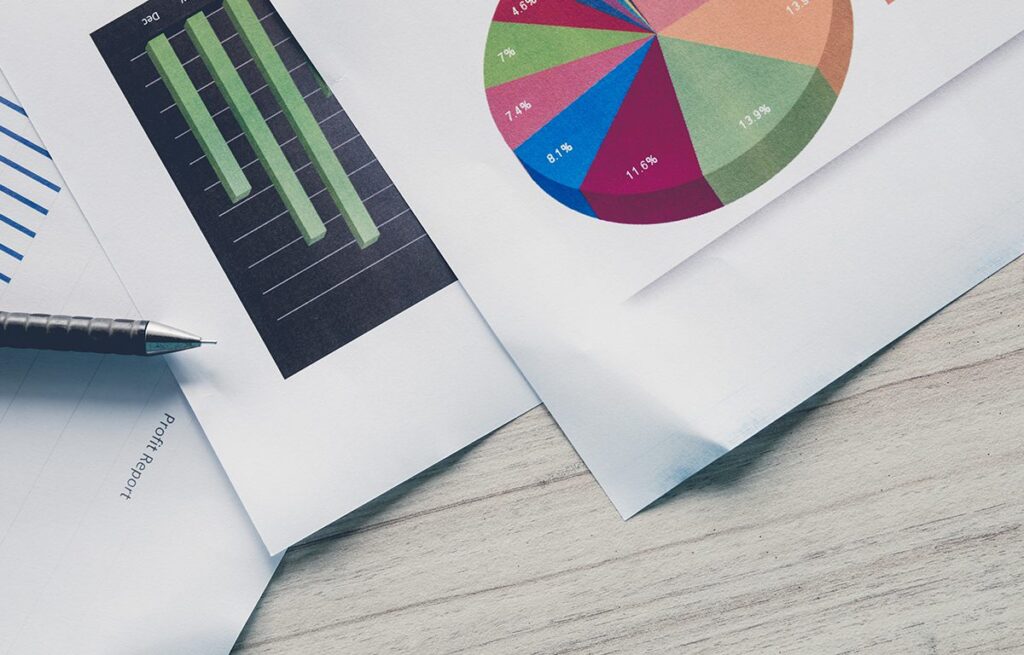
According to the US Bureau of Economic Analysis, the US GDP Growth Rate averaged 3.18 % from 1947 to 2021, reaching a high of 33.80% in the third quarter of 2020 and a low of -31.20% in the second quarter of 2020.
A strong labor market and the end of a pandemic will lead to a rapid rise in GDP this year. In the third quarter of 2021, the US economy rose by 2% on an annualized basis, far less than the 2.7% market forecast and down from the 6.7% growth rate in the second quarter of 2021. There was a surge in COVID-19 cases and global supply constraints on consumption and production, resulting in the slowest pandemic recovery growth. People’s consumption reduced drastically (1.6% vs. 12% in Q2) as goods (dominated by autos and components), as well as services, dropped (led by food services and accommodations).Nonresidential investment grew much slower (1.8% vs. 9.2%) and residential investment shrank (- 7.7% vs -11.7%). Exports fell 2.5% (vs +7.6%) while imports rose 6.1%. (vs 7.1%). Private inventories added 2.07% to growth.
US GDP Growth Rate
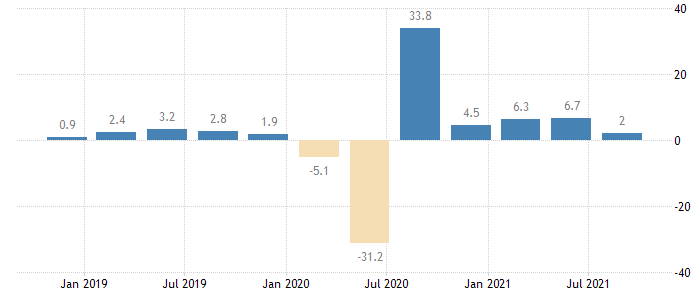
Source: tradingeconomics.com – US Bureau of Economic Analysis
In Q4, economic growth should improve as new Covid-19 cases have declined in recent weeks, and progress on vaccination continues to support the economy’s reopening. By the conclusion of the fourth quarter, global macro models and analysts at Trading Economics predict the US GDP to rise at a rate of 4%. According to Trading Economics’ econometric models, the US GDP Growth Rate will be 1.70% in 2022 and 1.90% in 2023.

Source: tradingeconomics.com – US Bureau of Economic Analysis
The number of construction workers has increased over the past few years, as the US Bureau of Labor Statistics mentioned. Annual inflation in the US was 6.2%, the highest level since November 1990 and far higher than the expectation of 5.8%. Energy costs rose across the board, with gasoline rising 30% from September (49.6%). Household goods (3.5%) and food (5.3%) both saw increases in inflation, as did transportation services (4.4%), apparel (4.3%), and medical care services (3.4%). (4.3 vs 3.4%). (1.7%) vs. (0.9%) Energy, housing, food, and transportation costs increased, pushing the rate to 0.9% in October from 0.4% in September.
The US Inflation Rate
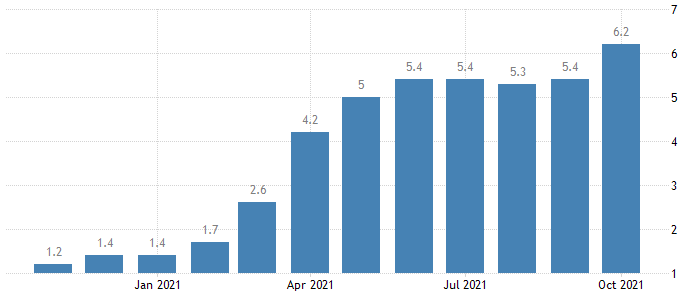
Source: tradingeconomics.com – US Bureau of Labor Statistics
According to global macro models and analysts at Trading Economics, this quarter, US inflation is expected to rise to 6.30%. Trading Economics’ econometric models predict that the US Inflation Rate will be 2.30% in 2022 and 1.90% in 2023.

Source: tradingeconomics.com – US Bureau of Labor Statistics
In the week ending November 6th, the number of new claims for unemployment benefits fell from 271 thousand to 267 thousand, barely above the 265 thousand market estimates. It was the lowest number of unemployment claims since the pandemic hit the US economy in March 2020. In the District of Columbia (-3,031), California (-2,540), Louisiana (-1,292), and Pennsylvania (-1,056), non-seasonally adjusted claims levels decreased.
The US Initial Jobless Claims
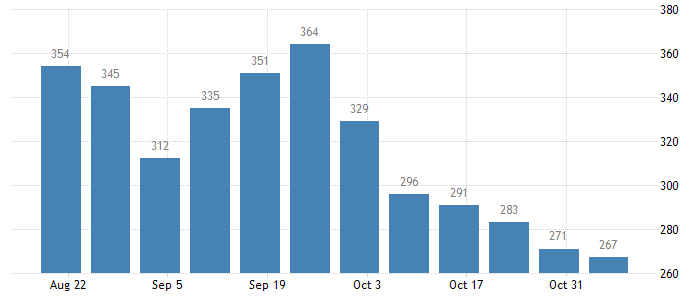
Source: tradingeconomics.com – US Department of Labor
Initial Jobless Claims are expected to reach 300 thousand by the end of the quarter, according to global macro models and analysts at Trading Economics. The econometric models for Trading Economics forecast US. Initial Jobless Claims to be around 270.00 Thousand in 2022.

Source: tradingeconomics.com – US Department of Labor
Conclusion
US economic health is still widely debated, despite significant progress in the labor market recovery and employment levels returning to pre-crisis levels. In addition, despite the fact that the recession’s worst effects are beginning to fade, the economy still faces a number of significant obstacles. Wage stagnation and rising income inequality, as well as large current account and government budget deficits in the US, are just a few of the problems that face the American economy at this time.
